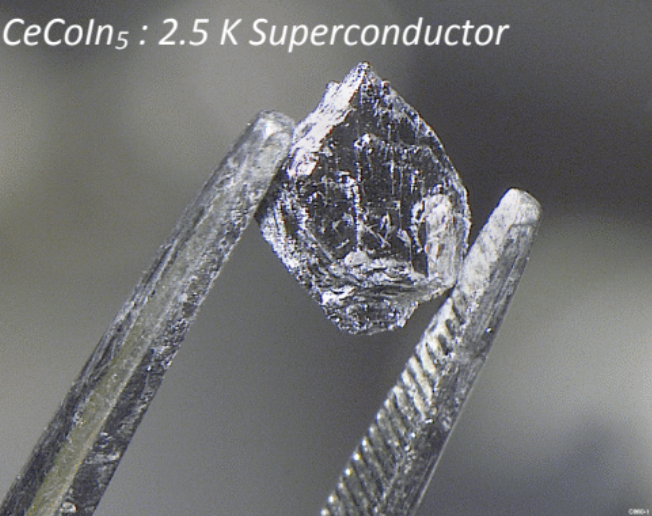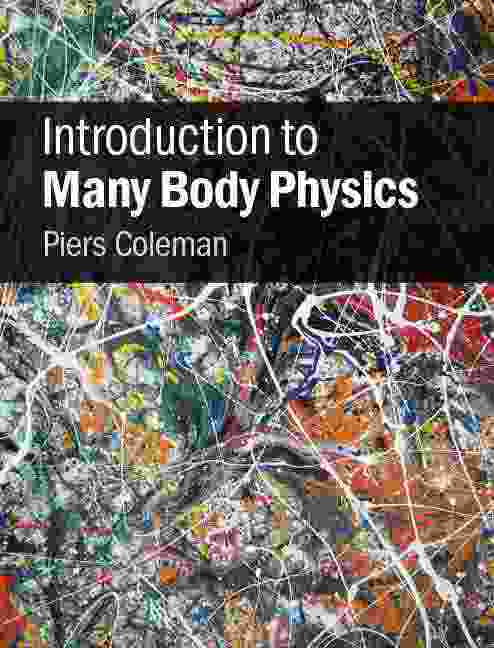8/23/18
Many Body 621
Spring 2023
| Images | Texts |
Exercises |
Times of Course |
Syllabus outline |
Timetable |
 |
|
Magic Angle Graphene |
Illustrating the Effective Action in Path Integral |
Relationship between Meissner Effect and Phase Rigidity of a Superconductor. |
Gap Structure of a d-wave superconductor |
 |
|
Phase Diagram of the Kondo Effect |
CeCoIn5: a 115 Superconductor |
Instructor: Piers Coleman, Room 268
If you have any questions about this course or the
homework, please do not hesitate to contact me via email
at : coleman@physics.rutgers.edu
Scope of Course. This course continues from Many
Body 620, and will introduce many body physics needed to
understand current research activities in quantum
condensed matter, including finite temperature methods,
response functions, path integrals, conventional and
unconventional superconductivity, strongly correlated
electron systems. I will also review essential
material and offer additiional tuition to cater to those
who were unable to take 620 last semester. Please
ask Shirley Hinds for a special permission to register.
There will be a lot of discussion and interaction. Please
register as soon as possible.
 |
The reference texts will be ``Introduction to Many-Body Physics'', Piers Coleman, (CUP, Jan 2016). Chapters 12-18. |
-
Here are some additional useful references:
- Condensed Matter Field Theory by Alexander Altland and Ben Simons.(CUP, 2006)
- Advanced Solid State Physics by Philip Phillips, second edition (CUP, 2012).
- Basic Notions in Condensed Matter Physics by P. W. Anderson, Benjamin Cummings 1984. A classic reference. Many of us still turn to this book for inspiration, and philosophy. It also has a fine selection of important reprints at the back.
-
Quantum Field Theory in Condensed Matter Phyiscs, A. M. Tsvelik, Cambridge University Press, 2nd edition (2003).
- R. Shankar, Rev Mod Phys 66 129 (1994). An amazingly self-contained review of the renormalization group and functional integral techniques written by one of the best expositors of condensed matter physics.
- ``Field Theories of Condensed Matter Physics'' by E. Fradkin. (Frontiers in Physics, Addison Wesley). Interesting material on the fractional statistics and the fractional quantum Hall effect.
- ``Methods of Quantum Field Theory in Statistical Physics'' by Abrikosov, Gorkov and Dzyalozinskii. (Dover Paperback) - Classic text from the sixties, known usually as AGD.
- ``A guide to Feynman Diagrams in the
Many-Body problem by R. D. Mattuck. A light
introduction to the subject. Reprinted by Dover.
- ``Greens functions for Solid State Physics'' S.Doniach and E. H. Sondheimer. Not as thorough as AGD, but less threatening and somehow more manageable. Frontiers in Physics series no 44.
- ``Quantum Many Particle Systems'' by J. W. Negele and H. Orland. Alas all the good physics is in the unsolved exercises! However, it is the only one of this set to touch on the subject of functional integrals.
- The Theory of Quantum Liquids by D. Pines and P. Nozieres. Excellent introduction to Fermi liquid theory that avoids the use of field theory.
- Statistical Physics, vol II by Lifshitz and Pitaevskii. Pergammon. Marvellous book on applications of many body physics, mainly to condensed matter physics.
Traditional Many Body Theory and Greens Functions
Further references:
Some
Online references (Check it out- this is a great
link).
Exercises 621 (Return to top)
(Return to top)
Times: 12.10 Weds and 2 pm Friday in Serin 287. NOTE: We will start on Weds, Jan 18th. Occasionally, to make up for my travel, we will hold an additional class at a time to be decided.
Office hour: Time to be decided. Tel x 9033.
Assessment: I anticipate four take home exercises. I want to encourage an interactive class and will take this into account when grading.
(Return to top)
Outline Still to be finalized. This is a very
approximate outline that we will adjust after discussion
at the first class.
- Functional Integral Approach to interacting electron
systems
- BCS superconductivity and beyond. particularly Anisotropic pairing in cuprate sc and superfluid He-3.
- SYK model
- Heavy Fermion Materials
- Twisted Bilayer Graphene
(Return to top)
Schedule: UNDER CONSTRUCTION
Week |
Extra class Time: 3pm Mondays |
Weds 12.10-1.30 SRN 287 |
Friday 2.00-3.20pm SRN 287 |
| Jan 16-20 |
18 Jan Introduction to Course. ONLINE Zoom Notes |
20 Jan Path integrals and finite temperature many body physics Notes L1 |
|
1 Jan 23-27 |
25
Jan Path integrals Bosons Notes L2 |
27
Jan Path Integrals: Many Bosons Notes L3 |
|
2 Jan 30-Feb 3 |
1st Feb SRN 287 Sources in Gaussian Ints BECs and Superfluids. Notes L4 |
3rd Feb Serin 287 Spectrum of a superfluid and Critical Velocity Notes L5 |
|
3 Feb 6-10 |
8 Feb SRN 330 Fermions and Grassman Numbers: Grassman Calculus Notes L6 |
10 Feb Fermion Path Integral Notes L7 |
|
4 Feb 13-17 |
15 Feb Integrating out Fermions Notes L7 |
17
Feb Hubbard Stratonovich for Fermions Notes L9 Notes L10 |
|
5 Feb 20-24 |
22 Feb RPA Approach to the interacting Electron Plasma: electrons in a fluctuating potential field. Notes L11 |
24 Feb RPA Approach to the interacting Electron Plasma: Effective Action. Notes L12 |
|
6 Feb 27-Mar 3 |
2nd March Make up class RPA: Screening and Plasmons Notes L13 |
3rd
March Bardeen Pines Model Notes L13 |
5th
March Fluctuations and Dissipation I. Response Functions. Notes L14 |
7. Mar 7 -11 |
8th
March No Class: March Meeting |
10th
March No Class: March Meeting |
|
8. Mar 14-18 |
Spring Break |
Spring Break |
|
9. Mar 20-24 |
22nd
March BCS Theory: Cooper instability. Pairs as spins. Notes L19 |
24th
March Path Integral Formulation of BCS Theory: Effective Action Notes L20 |
|
10. Mar 27-31 |
28th March Discussion |
29th
March Nambu Spinors. Anomalous Greens functions. Notes L20 |
31
March |
11. Apr 4-8 |
April
5th Twisting the phase: Gauge Invariance and Superfluid Stiffness Notes L20 |
April
7th BCS Theory Twisting the Phase: Gauge invariance and Superfluid Stiffness Notes L20 |
|
12. Apr 10-14 |
April
12th Retardation in BCS Theory; Migdal Eliashberg Recording of Class L20x Notes from Class |
April
14th Eliashberg Equations for phonon-mediated superconductivity. Recording of Class L21 Notes from Class. |
|
13. Apr 18-22 |
April
19th Local Moments and Heavy Fermions |
|
|
| 14.
Apr 25-29 |
|||
15. May 2-6 |
|||
(Return to top)